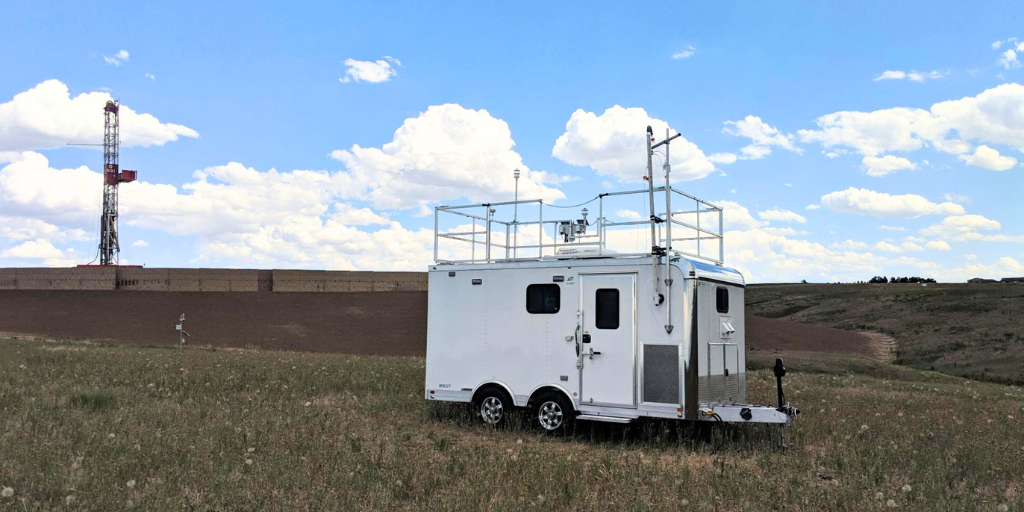Air toxics
On this page: What are air toxics? | Where do air toxics come from? | Learn more about air toxics | Contact
Colorado regulates air toxics to protect public health and the environment. In addition to following federal air toxics standards, the state is taking actions such as:
- Investing in cleaner transportation options.
- Requiring oil and gas companies to monitor and control air pollution emissions.
- Implementing an air toxics program to increase reporting, monitoring, and reducing exposures to air toxics emissions.
What are air toxics?
Air toxics are also called hazardous air pollutants or toxic air contaminants. These compounds cause or are suspected of causing cancer, birth defects, and other negative health impacts. They also harm the environment.
Air toxics include gasses (e.g., benzene, toluene, ethylbenzene, and xylenes), industrial solvents, and heavy metals.
Air toxics can be found indoors and outdoors. Colorado Department of Public Health and Environment’s air toxics program focuses on air toxics emitted into outdoor air.
Toxic Air Contaminants (TAC)
In April 2025, the Air Quality Control Commission adopted the Colorado Toxic Air Contaminant (TAC) list. The TAC list can be found in Regulation 3, Part A, Appendix C.
The commission must periodically review the TAC list to determine whether or not to designate additional air pollutants as TAC. The next review must occur no later than September 30, 2030, and every five years thereafter.
Some pollutants on the TAC list have also been identified as priority toxic air contaminants. Learn more about Colorado’s priority toxic air contaminants.
Where do air toxics come from?
Air toxics are released naturally and through human activities. Additionally, some air toxics are created in the air when different chemicals mix together.
Natural sources
- Wildfires can produce air toxics, such as methanol, formaldehyde, and acetaldehyde. The amount of air toxics produced by wildfires vary greatly each year. In 2020, wildfires produced 10 times more air toxics than the previous reporting year.
- Other natural sources include plants and animals that produce air toxics. These are known as biogenic sources. For example, methanol, formaldehyde, and acetaldehyde are released from forests.
Wildfires can produce large amounts of air toxics:
The data comes from the 2020 National Emissions Inventory (NEI) version 1, released March 28, 2023, for Colorado. The “Amount of air toxics produced (pounds)” represents the amount produced in the 2020 calendar year. This graph only includes air toxics that are federal hazardous air pollutants.
Human activities
- Many sectors burn fuel that results in air toxic emissions. Burning fossil fuels can produce large amounts of benzene, toluene, ethylbenzene, and xylenes. For example:
- Mobile sources use gasoline and diesel to power vehicles, airplanes, trains, and construction equipment.
- Residential sources burn wood to heat homes. Like other natural sources, wood burning releases formaldehyde, acetaldehyde, and other air toxics.
- The industrial, commercial, and institutional sectors combust fuel, primarily natural gas or diesel, to provide building or process heating or supply backup power.
- Industrial processes including manufacturing, sterilization, or oil and natural gas extraction can produce air toxics, including ethylene oxide, hexane, and formaldehyde.
- Solvents used in the industrial, commercial, institutional, and residential sectors for cleaning, degreasing, painting or surface coating contain air toxics such as glycol ethers or toluene.
- Agricultural activities can produce large amounts of ammonia, methanol, and acetaldehyde.
Industrial and mobile sources are the largest human sources of air toxics:
The data comes from the 2020 National Emissions Inventory (NEI) version 1, released March 28, 2023, for Colorado. The distribution of emissions reflects each sector’s contribution in the 2020 calendar year. This graph only includes air toxics that are federal hazardous air pollutants.
Learn more about air toxics

Measuring air toxics


Contact
For health questions, contact ToxCall at (303) 692-2606 or cdphe_toxcall@state.co.us.
For Air Pollution Control Division contacts, visit our Contacts page.